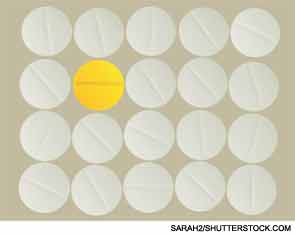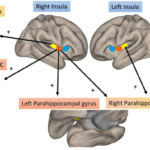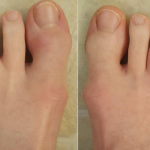
MADRID—A robust level of research into psoriatic arthritis (PsA) and osteoarthritis (OA) over the past year has led to new insights in a variety of areas, including the pathogenesis of PsA and the role of subchondral bone in OA, experts in these areas said here at the European League Against Rheumatism (EULAR) 2013 Annual European Congress of Rheumatology, held June 12–15.
Targets and Treatments for PsA
Juan Jesus Gomez-Reino Carnota, MD, PhD, professor of rheumatology at Universidad de Santiago de Compostela in Spain, said emerging pathways, including interleukin (IL) 23, IL-17, and IL-22, and IL-1, seem to play important roles and might be worthwhile treatment targets.
“There is quite interesting and exciting information regarding the pathogenesis of psoriatic arthritis,” he said.
A comprehensive study examining data from the Nurses’ Health Study, the Nurses’ Health Study II, and the Health Professionals’ Follow-up Study found that the relative risk of developing psoriasis was higher for those who’ve smoked in the past than it was for those who’ve never smoked. And it was even higher for current smokers, generally with a larger quantity of cigarettes smoked per day correlating with a higher risk.1 “We have a lot of different reasons here to advise our patients not to smoke,” Dr. Gomez-Reino said.
As far as new agents, fresh research is being published all time, he said. One randomized, placebo-controlled trial from last year found that methotrexate’s effects on PsA response were minimal on the Psoriatic Arthritis Response Criteria index (PsARC), ACR20 index, and Disease Activity 28 (DAS28).2
But, he emphasized that the evidence available on this is relatively thin. “I would not use this trial to discourage you from using methotrexate,” he said. “I think we need much more information about this before we decide.” And EULAR still recommends methotrexate for OA, he noted.
Leflunomide, a disease-modifying drug, was found to be effective for PsA in a large observational study, the European Prospective Observational Study (OSPAL).3
In another interesting study, the TNF-blocker certolizumab was found to be just as effective for those with prior anti-TNF exposure as for those without it, Dr. Gomez-Reino said.4
Results also emerged showing that rituximab might be an option for PsA patients. An exploratory study including nine patients treated with rituximab showed improvements across a wide range of disease-activity scales for those patients, he said.5
Secukinumab, an IL-17 inhibitor, and usketinumab, an IL-12/IL-23 inhibitor, also showed promise in trials over the last year—secukinumab in a variety of arthritic conditions and usketinumab in PsA.6,7 But they generally did not produce better results than TNF-inhibitors have shown, Dr. Gomez-Reino said. Still, he reserves judgment on the agents for now. “The clinical trials have to go on, and we’ll see what happens,” he said.
Medical and Nonmedical Approaches to OA
Margreet Kloppenburg, MD, PhD, professor of rheumatology at Leiden University Medical Center in The Netherlands, said that the 3,500 published manuscripts on osteoarthritis over the last year produced two main themes: the importance of the role of subchrondral bone as a target for therapy, and the role of nonpharmacological therapy, especially physical therapy.
Findings in a study recently published in Nature Medicine showed how high concentrations of transforming growth factor–beta (TGF-β) in the subchondral bone induces the formation of mesenchymal stem cell clusters, and ultimately leads to bone abnormalities.8 This was found in an animal model, but high concentrations of TGF-β also exist in people with osteoarthritis.
The findings raise the question of the value of a therapy blocking TGF-β, but it is a complicated topic, Dr. Kloppenburg said. “That is not such an easy question to answer because TGF-β also has positive effects,” she said. “So we don’t know that at the moment.”
Another recent study suggests a link between a change in systemic bone mineral density and OA progression. But, she said, researchers have to get at the underlying mechanism and, “that is not easily understood.”
On the role of physical therapy for knee OA, Dr. Kloppenburg pointed to a meta-analysis of more than 80 randomized controlled trials on pain, disability, and physical function.9
Researchers concluded that there is low-strength evidence that several physical therapy interventions are effective. They found aerobic, aquatic, strengthening, and proprioception exercise, as well as ultrasonography, to be effective. But, they found no benefit to diathermy, orthotics, and magnetic stimulation.
Another study, involving 351 patients with mild to moderate knee OA called into question the role of arthroscopic partial meniscectomy in knee OA with pain thought to have arisen from a meniscal tear, finding no significant benefit compared to physical therapy alone.10 However, a proportion of patients assigned to the physical therapy group did cross over to surgery.
The findings, she said, suggest that, “in this patient group, physical therapy is a good option.”
In another study, a randomized controlled trial of 146 symptomatic knee OA patients, there was no benefit found from vitamin D supplementation on pain and structural findings.11
“Although there were substantial ideas from observation studies that vitamin D could be a target to work,” Dr. Kloppenburg said, “it does not come in this randomized controlled trial.”
Thomas Collins is a freelance medical writer based in Florida.
References
- Li W, Han J, Choi HK, Qureshi AA. Smoking and risk of incident psoriasis among women and men in the United States: A combined analysis. Am J Epidemiol. 2012;175:402-413.
- Kingsley GH, Kowalczyk A, Taylor H, et al. A randomized placebo-controlled trial of methotrexate in psoriatic arthritis. Rheumatology (Oxford). 2012;51:1368-1377.
- Behrens F, Finkenwirth C, Pavelka K, et al. Leflunomide in psoriatic arthritis: Results from a large European prospective observational study. Arthritis Care Res. 2013;65:464-470.
- Mease P, Fleischmann RM, Wollenhaupt J, et al. Effect of certolizumab pegol on signs and symptoms in patients with psoriatic arthritis with and without prior anti-TNF exposure: 24 week results of a phase 3 double-blind randomized placebo-controlled study. Arthritis Rheum. 2012;64 (Suppl.):S1107.
- Jimenez-Boj E, Stamm TA, Sadlonova M, et al Rituximab in psoriatic arthritis: An exploratory evaluation. Ann Rheum Dis. 2012;71:1868-1871.
- Patel DD, Lee DM, Kolbinger F, Antoni C. Effect of IL-17A blockade with secukinumab in autoimmune diseases. Ann Rheum Dis. 2013;72(Suppl 2):ii116-ii123.
- McInnes IB, Kavanaugh A, Gottlieb AB, et al. Efficacy and safety of ustekinumab in patients with active psoriatic arthritis: 1 year results of the phase 3, multicentre, double-blind, placebo-controlled PSUMMIT 1 trial. Lancet. 2013. pii: S0140-6736;60594-60592.
- Zhen G, Wen C, Jia X, et al. Inhibition of TGF-β signaling in mesenchymal stem cells of subchondral bone attenuates osteoarthritis. Nat Med. 2013;19:704-712.
- Wang SY, Olson-Kellogg B, Shamliyan TA, et al. Physical therapy interventions for knee pain secondary to osteoarthritis: A systematic review. Ann Intern Med. 2012;157:632-644.
- Katz JN, Brophy RH, Chaisson CE, et al. Surgery versus physical therapy for a meniscal tear and osteoarthritis. N Engl J Med. 2013;368:1675-1684.
- McAlindon T, LaValley M, Schneider E, et al. Effect of vitamin D supplementation on progression of knee pain and cartilage volume loss in patients with symptomatic osteoarthritis: A randomized controlled trial. JAMA. 2013;309:155-162.


